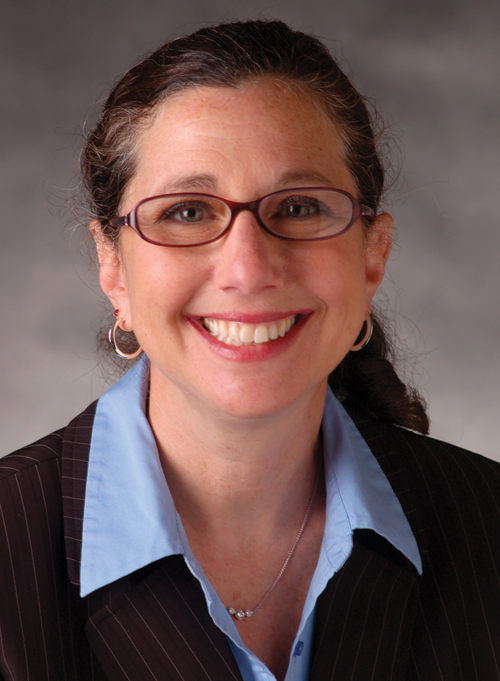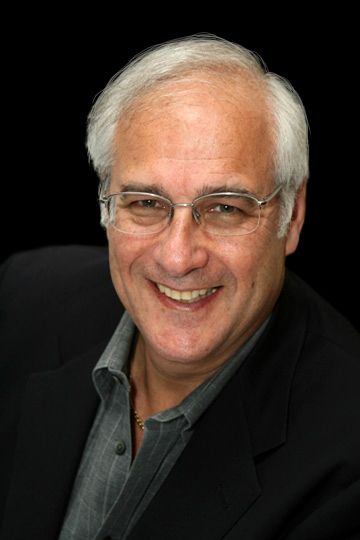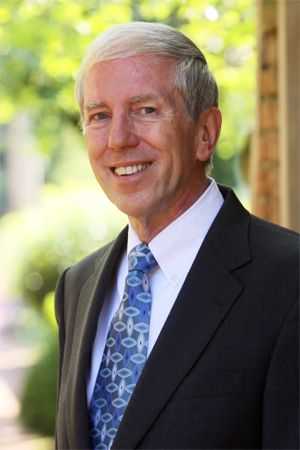Looking Ahead: Part II
Editor's Note: This is the web follow-up to our January cover story, "Looking Ahead: Industry Insiders Forecast Future Trends." There is no sure way to predict what to expect in the year to come. launches get delayed. economic issues reshape expectations. Patient behavior can be…unpredictable.
Editor's Note: This is the web follow-up to our January cover story, "Looking Ahead: Industry Insiders Forecast Future Trends."
There is no sure way to predict what to expect in the year to come. launches get delayed. economic issues reshape expectations. Patient behavior can be…unpredictable.
But while the practical efforts of reading the professional tea leaves may not bear much fruit, the exercise, in principle, is an interesting way to gauge just how ready your team and your practice is to take advantage of new opportunities and confront sudden challenges.
We had the privilege of speaking with a variety of people eager to share their insight and expectations.

Amy Morgan, CEO of the Pride Institute
In her role as CEO of the Pride Institute, Amy Morgan has the opportunity to speak with dentists practicing in a wide variety of settings. Traveling the country for consulting and speaking engagements, Amy has a broad perspective that we were eager to tap into. Here, she gives her take on what is keeping dentists up at night and how they can best be prepared to meet the challenges ahead.
With a focus on practice management, you are on the front line of hearing dentists’ concerns about the bottom line. How do you see the global and national economic realities hitting the dentist on a block by block basis?
It seems that the profession was feeling that, while the economy in general was beginning to pick up, that the weight of the downturn was hitting dentistry later than other professions. It was almost like a wearing down of - you hear enough bad news and it starts to become a reality. As our consultants traveled the nation we began to hear the regional concerns: “I don’t know about the rest of the country, but here in…”
So, from our perspective, that while people were concerned about the initial phases of the recession, they weren’t feeling it as much as they were in 2011. Earmarks show the economy improving, but the doctors, the team and the patients are still skittish. In turn, practices are still adjusting to address these issues. We’re working to make sure that they do adjust-in some way-otherwise “down” years are a certainty.
When it comes to “adjustments,” what aspects of the practice do you recommend dentists look at?
The impact of the economy shows up various ways:
First, there is a bigger concern about no-shows and cancellations. There is the new patient inquiry and conversion to showing up to that first appointment. And we’re seeing a huge uptick in no-shows for basic hygiene appointments as well as in the doctor’s schedule. Right or wrong, offices are pointing the finger at the economy.
Second, practices still face the conundrum of getting patients to say yes to ideal treatment and not just palliative care. As companies cut benefits overall, dental benefits are some of the first to get downsized. Practices start asking the question, “Should we be on more insurance plans?”
Third, there is new patient flow. In trying to drive new patient engagement, dentists start asking which marketing strategy is the real one versus the snake oil. Trying to figure out what works is going to continue to be essential.
What are some initial steps you would recommend dentists take in order to meet these challenges?
As we know, insanity is repeating the same behavior over and over, expecting a different result. There are few key things I would recommend.
We can put marketing, treatment and patient management under one big, outdated umbrella. It is always interesting that in our profession, there are many doctors who took a course 15 years ago on patient management, and they are still doing it exactly the same way 15 years later. Even if that training was from a credible source, what worked then isn’t necessarily working today – so what are you doing differently?
Open-ended questions and a co-diagnostic collaborative experience are just the basics. Practices also need to consider: Are there new techniques to handle objections? Are they screening new patient experiences for the level of dentistry they truly desire? Have you considered more flexible financial options? You can’t keep approaching a patient of a new millennium the way you did in the ‘80s.
The same goes for marketing. We’re still at the point with new frontier of social media that having it is seen as the “end result” instead of fully utilizing it. There are so many new solutions to these new problems and dentists keep trying to solve them in the same way.
We are working with our clients to get more creative when it comes to flexible finances. It can’t just be offering CareCredit like you were 25 years ago. There needs to be new and creative internal options. We’ve been messing around with the “healthy family” program: If the family follows through on homecare, shows up on time and opts for “ideal” treatment, then they are eligible for family rebate to put towards the next year.

Dr. Howard Glazer
There are numerous noteworthy credentials that would make Dr. Howard Glazer a great interview, but it is his “What’s Hot and Getting Hotter” column and lecture series that made him a perfect choice for our 2012 forecast feature.
We asked the AGD Past President and professor to give us the inside scoop on some of the products that have caught his attention and the trends he thinks dentists should be aware of.
You’ll be offering your “What’s Hot and Getting Hotter” lecture at the Chicago Dental Society’s Midwinter meeting in February. Can you give us a preview of what you’ll be covering?
There’s a lot to talk about. We’ll discuss the new matrix system, Contact Matrix from Arnel Dental Products. Right now, they make a universal MO/DO band, but will be unveiling a new MOD option. You can buy the band for about $2 to create a MOD, without using multiple sectionals and rings. You simply need a Tofflemeier-type retainer.
There will also be a lot more discussion around minimally invasive dentistry and the products that help make MID procedures easier, for example SS White’s Smart Bur II which, in some cases, allows you to remove decay without anesthesia. It will cut only infected, unhealthy dentin. This is not only minimally invasive, but available at minimal cost. Minimally invasive dentistry is here to stay, so the profession needs to continue to move in that direction. We’re creating products in this vein all the time.
I also plan to focus on increased use of what I term “no-flow flowables” and some of the new bulk fill posterior composites. Also new and exciting on the materials side is Septodont’s Biodentine.
Then, we’ll go in another direction to understand more about anesthesia and patients who “hate the shot,” utilizing Onpharma’s new Onset Buffering technology.
It seems like there is so much to cover in any given year. How do you decide what you’ll include in the lecture?
When I evaluate new products, I’m looking for faster, easier and better-for me as a doctor and for the patient, who is the ultimate end user. When it comes to evaluating, I’m clinical, not scientific. I’m not Gordon Christensen or John Powers. I always tease my audience and say I’ll start my own publication: “GUT” for Glazer’s Unscientific Testing. What people know is that I’m going to tell you the truth.
Are there any areas that you think dentists are worried about, but shouldn’t be?
The concern I see is not so much a lack of understanding when it comes to materials, but worry and confusion around the false assumption that there is an inordinate amount of shrinkage in composites. In my mind, there is no need to worry about that anymore. For example, shrinkage is no longer a major issue - we’ve overcome it. But many of my colleagues think they need a flowable and need to press composite over it. There’s nothing wrong with the sandwich technique, but it isn’t necessary anymore.
On the flip side, are there any issues that you think dentists should be more worried about?
People have their head in the sand when it comes to oral cancer. There are too many dentists who aren’t even conducting a proper exam, let alone using a device that will help them. You have to do something! There are so many options now…
For the dentist who wants to be “in the know” on these topics, what do you see as some of the best resources for staying current?
Come to all of my lectures! But seriously, people like myself, Gordon Christensen, George Freedman, Lou Graham, Louis Malcmacher, Paul Feuerstein - we’re committed to staying on top of what is happening and trying to be a help and a guide to our colleagues. I’ve been practicing dentistry for more than 36 years and believe me when I say this is an exciting time.
Patients are living longer and we provide an invaluable service to them in helping them enjoy their smiles longer.

Dr. John Gerding
Since graduating from the Loyola University School of Dentistry and serving as a Captain in the United States Army Dental Corps, Dr. Gerding has spent the last 30 years practicing general dentistry in Chicago’s Western Suburbs. He began as an associate dentist with one of his former Loyola professors, followed by a partnership in a large group dental practice. From there he moved to his current solo practice where he could devote more personalized care to his patients than he felt possible in a group setting. He is the current president of the Chicago Dental Society.
We asked Dr. Gerding to share some of his predictions for the year ahead…
I have some thoughts but certainly no crystal ball. I would surmise that the biggest top-of-mind issue for dentists in 2012 will be little different than 2011, namely the continued effect of the economy on the dental treatment sought by consumers. It seems to be an industry-wide problem, especially when one talks with dental laboratories and most specialists, and no immediate turnaround appears forthcoming.
As for products, I am excited to use in the dental office, I would have to place laser use on hard tissue near the top of my list. It seems that the promise of the laser to replace the handpiece has been on the horizon for years but has yet to make that quantum leap forward. Perhaps 2012 will be the year, and that would certainly have a huge impact on dental practices and patient experiences if it does in fact take place on a large scale in the coming year. More realistically, however, I don't see that technology breakthrough in most offices until closer to 2015. What I expect to become more widespread in 2012 will be the digital scanner slowly replacing the traditional impression techniques. This would in my mind be the next biggest change in the way most dental practices treat their patients.
How Dentists Can Help Patients Navigate Unforeseen Dental Care
December 12th 2024Practices must equip patients with treatment information and discuss potential financing options before unexpected dental treatments become too big of an obstacle and to help them avoid the risk of more costly and invasive procedures in the future.